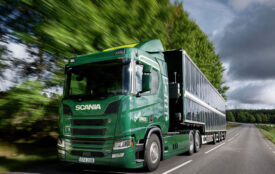Study on battery recycling shows China is in 1st place
China is ahead of Europe and the US in using recycling to meet its needs for lithium, cobalt and nickel for batteries
With the increase in the production of batteries for electric vehicles, demand is also rising for the necessary raw materials. In view of risks to the supply chain, environmental problems and precarious working conditions which are all associated with the mining and transportation of these materials, the recycling of battery materials has become an important issue in research, politics and industry. Prof. Stephan von Delft from the University of Münster heads a team of researchers from the fields of science and the automotive and battery industries who have therefore been investigating when the demand for the three most important raw materials for batteries – lithium, cobalt and nickel – can be met entirely through recycling in Europe, the US and China; in other words, when a completely circular economy will be possible in these regions. The team’s conclusion is that China will achieve this first, followed by Europe and the US.
In detail, the results show that in China, primary lithium for electric cars, i.e. lithium obtained by mining, is expected to be replaced by recycled lithium from 2059 onwards; in Europe and the US, this will not happen until after 2070. As far as cobalt is concerned, recycling is expected to ensure that China will be able to meet its needs after 2045, at the earliest; in Europe this will happen in 2052 and in the US not until 2056. As regards nickel: China can probably meet demand through recycling in 2046 at the earliest, with Europe following in 2058 and the US from 2064 onwards.
Although earlier research looked at the supply of recycled raw materials for batteries and the demand for them, it had not so far been clear when complete circularity would be achieved, with supply and demand being equal (“break-even point”). The team of researchers also looked at the question of whether there are any possibilities of achieving equilibrium sooner than is predicted by current developments. “Yes, there are,” says Stephan von Delft. “Our research shows that, in particular, a faster rate of electrification in the automotive industry, as is currently being discussed in the EU, will play a role in the process. The reason is that the faster electric vehicles spread throughout the automotive market, the sooner there will be sufficient quantities of batteries available for recycling.” As PhD student Jannis Wesselkämper adds, “The demand for raw materials could also be met much earlier by recycling as a result of a reduction in battery size and by avoiding a so-called ‘second life’ for batteries – for example as stationary storage units for solar power.”
The researchers made use of a so-called dynamic material flow analysis to calculate both future demand and the recyclable raw materials then available. The data basis the team used consisted of data from current research work and market forecasts regarding developments in battery production and sales and the associated demand for raw materials.
- Jannis Wesselkämper, Laureen Dahrendorf, Lukas Mauler, Simon Lux, Stephan von Delft (2024): A battery value chain independent of primary raw materials: Towards circularity in China, Europe and the US. Resources, Conservation & RecyclingVolume 201; DOI: 10.1016/j.resconrec.2023.107218








